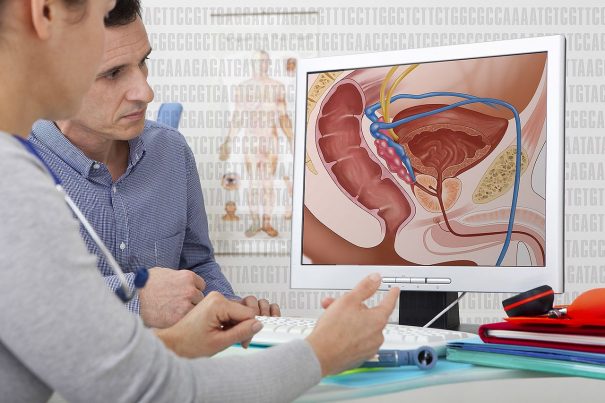
Prostate Disorders – causes, side effects and treatments at NaturalPedia.com
Wednesday, August 08, 2018 by Ralph Flores
http://www.naturalpedia.com/prostate-disorders-causes-side-effects-and-treatments-at-naturalpedia-com.html

The prostate is essential for the production of semen, a fluid that contains sperm. It also surrounds the urethra which carries urine from the bladder and out of the body. As a man ages, his prostate slowly grows larger. However, if it grows too large, it can lead to problems.
In particular, disorders of the prostate affect men over 50, and the likelihood of having it increases with age. The condition is marked by dysfunctions in bladder function, most notably in its frequency and efficiency.
The three most common conditions include:
- Benign prostatic hyperplasia (BPH). The most common prostate disorder in older men, BPH is the enlargement of the prostate gland, wherein it constricts the urethra and affects the flow of urine. BPH is not cancerous, but symptoms still require medical attention.
- Prostatitis. The condition refers to an inflammation of the prostate gland. Prostatitis is more common in men below 50 years, but it can also occur in older adults.
- Prostate cancer. A frequent diagnosis in older men, prostate cancer can be a fatal disease if it is not immediately addressed. The condition is more common in men over the age of 70, but it can still occur in men under the age of 40.

Known risk factors and symptoms of prostate disorders
Risk factors for prostate disorders vary by type.
- People with a urinary tract infection (UTI) are more likely to be affected with bacterial prostatitis, and stress increases the risk of chronic prostatitis.
- BPH is influenced not only by age but also family history.
- Prostate cancer is a risk for older men and those who are African-American.
Common symptoms include:
- Frequent urination
- The feeling of having “to go,” but with little or no urine
- A leak or dribble urine
- Having a weak urine stream
Body systems affected by prostate disorders
Prostate disorders can lead to other health conditions, including:
- Difficulty during sexual intercourse
- Urinary tract infections
- Chronic pain
- Inflammation of nearby areas
- Bladder stones
- Renal failure
Food items or nutrients that may prevent prostate disorders
Some recommended food items to prevent prostate disorders include:
- Pumpkin and watermelon seeds
- Cornsilk
- Stinging nettle or palmetto, in extract forms
Being hydrated, as well as limiting intake of fatty food, red meat, and alcohol, also reduces the risk of prostate disorders.
Treatments, management options for prostate disorders
Aside from a healthy diet, regular exercise is also a key factor in reducing the risk of prostate disorders. Some suggested activities include brisk walking, running, and rigorous outdoor work.
Where to learn more
- Herbal Medicine to Control Prostate Enlargement
- 12 Hormone Disrupting Chemicals! How To Avoid It Naturally?
- Warning: 12 American Foods That Are Banned In Other Countries
- 12 Hormone Disrupting Chemicals! Tricks To Avoid It Naturally
- Why some of the best health strategies of all are never advertised or promoted
Summary
Prostate disorders affect men over 50, and the likelihood of having it increases with age.
Prostate disorders are marked by problems in bladder function.
Aside from age, those with a urinary tract infection (UTI) and those with a family history of the disease are more likely to be affected with prostate disorders.
Symptoms of prostate disorders are linked to difficulties with urination.
The risk of prostate disorders can be reduced with a healthy diet and regular exercise. Some suggested activities include brisk walking, running, and rigorous outdoor work.
Sources include:
Tagged Under: Tags: Prostate Disorders





